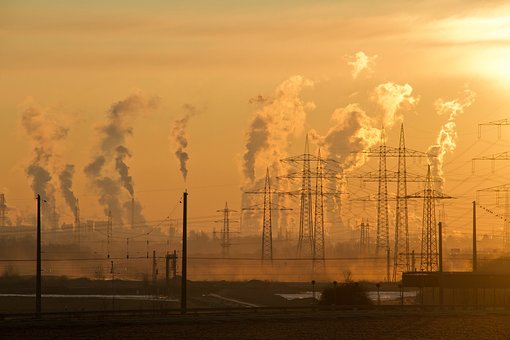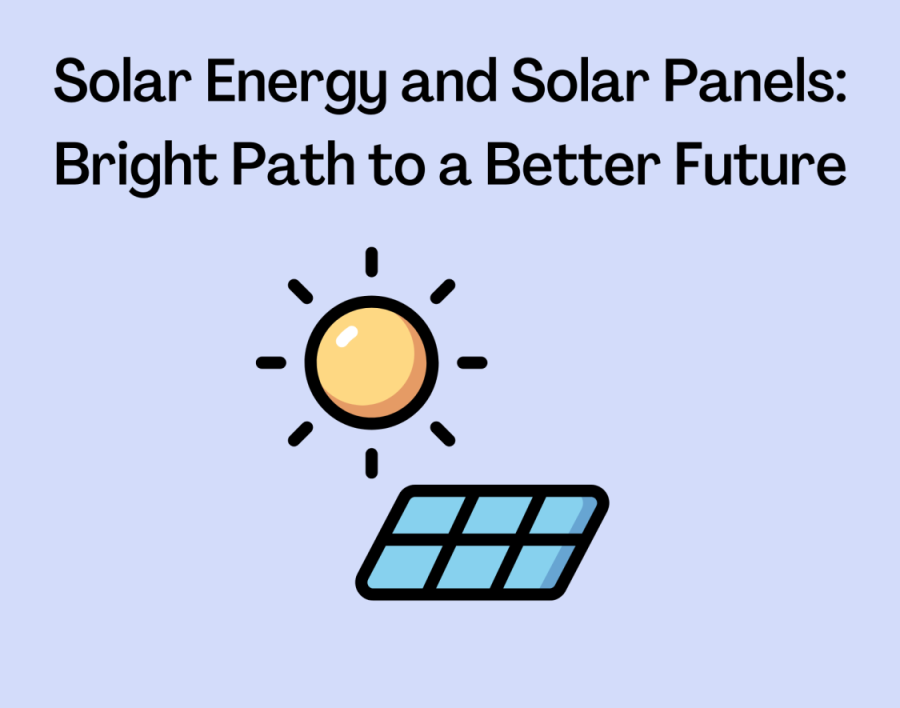Solar Energy and Solar Panels: Bright Path to a Better Future
Solar energy is one of the most widespread and famous types of renewable energy. It can be harnessed almost anywhere in the world, unlike hydroelectric power, which needs a rapidly flowing body of water, or wind power that needs a strong enough breeze. Seeing solar panels on a semi self-sufficient house is a common thing nowadays. Yet solar panels can do so much more than just help power a home. If used to their full extent, solar panels could power the world. Despite some slight and insignificant dilemmas, solar power is beneficial to the economy, environment, and is cost-efficient.

All across the United States, solar farms are starting to pop up. The amount of energy these farms are producing shot up to 20% of the energy the United States uses over the past 15 years. Not only has the efficiency increased, but the prices have fallen so much, solar energy is projected to pay for itself in five to ten years. This means that not only could solar energy power the biggest, liveliest cities, like New York or Los Angeles, it could also light the poorer regions of America.
Whether through a massive farm supplying power to millions of homes or a few solar panels on top of their roof, these families would be able to finally get cheap, reliable power. A common issue that these families had run into is the rise and fall of natural gas and electric prices. With solar energy, the price is decreasing, meaning it will get gradually easier for them as time goes on, maybe one day it would potentially be free.
Solar power, like all forms of renewable energy, is very beneficial to the environment compared to nonrenewable sources. These sources create energy by burning. For example, fossil fuels, natural gas, and coal are all burned to heat water and create steam, which propels a magnetic generator to spin, creating electricity. Yet harmful byproducts of the burning are sulfur dioxide, particulate matter, and nitrogen oxides. These are harmful to both the environment and humans, as it contributes to global warming, causes breathing problems like asthma to flare up, or creates breathing problems in an otherwise perfectly healthy person.

Solar power, on the other hand, doesn’t emit any harmful chemicals. If we were to use solar energy in place of nonrenewable energy sources, we would be able to greatly reduce the number of greenhouse gasses in our atmosphere and greatly diminish the carbon footprint of all mankind. This would slow climate change enough to give us time to focus on other issues, like the plastic buildup in the ocean or the water crisis. Once these are solved, we could move on to more issues, and then more, and more, and so on, until we have dealt with the massive pileup of problems stemming from the Industrial Revolution and some even farther back. Thankfully, solar power is becoming cheaper and cheaper by the year.
The cost of solar panels has fallen 99% since 1977. They have also become more efficient and more streamlined. A big argument against solar power is that it is an eyesore and land could be used for better purposes, like farming or development. Are we going to argue against one of the most promising sources of renewable energy on the basis that it isn’t aesthetically pleasing? Besides, the land that is used for solar farms is typically land that has been donated or is privately owned by a power company.

These farms take up less space than oil fields and mines, so they end up decreasing the amount of land “wasted” to provide power. Private solar panels meant to power individual homes typically are on roofs, where the only space they are wasting is the space where some shingles or a section of metal roof would have been. With all of this good, it seems like solar panels are a figment of someone’s imagination or are just too good to be true.
An important part of a healthy economy is that it is always changing. This means that there will never be a steady price for one product. Because of this, utility prices will always fluctuate, so in the future, there is a chance solar power prices will go up. Yet if handled properly with transparent business practices, the power companies providing solar energy will be unable to raise their prices. The only jobs needed for solar power harvesting are technicians and/or maintenance crews, installation crews, and the normal management jobs found in any company.
Some might argue that this causes unemployment as miner’s jobs would be lost. This is false, as the number of installation jobs needed to fully provide power to the United States would create enough new jobs that everything would balance out for the next few decades.
Solar power was once thought to be a product of the future, like flying cars and time travel. Now, they are a tangible solution to pollution and the lack of affordable energy in some places in the United States. Solar power is beneficial to the economy, environment, and is cost-efficient. If we stay on track, maybe someday the sun won’t just light our days, but completely power our electronic world.
Your donation will help support not only the student Journalism and Yearbook clubs at Marco Island Academy, but as well as any new equipment, club improvements, and annual website hosting costs.

Elle Richardson is a senior at Marco Island Academy and the Executive Editor for The Wave. She enjoys learning about space, sailing, and 70s music. Math...











